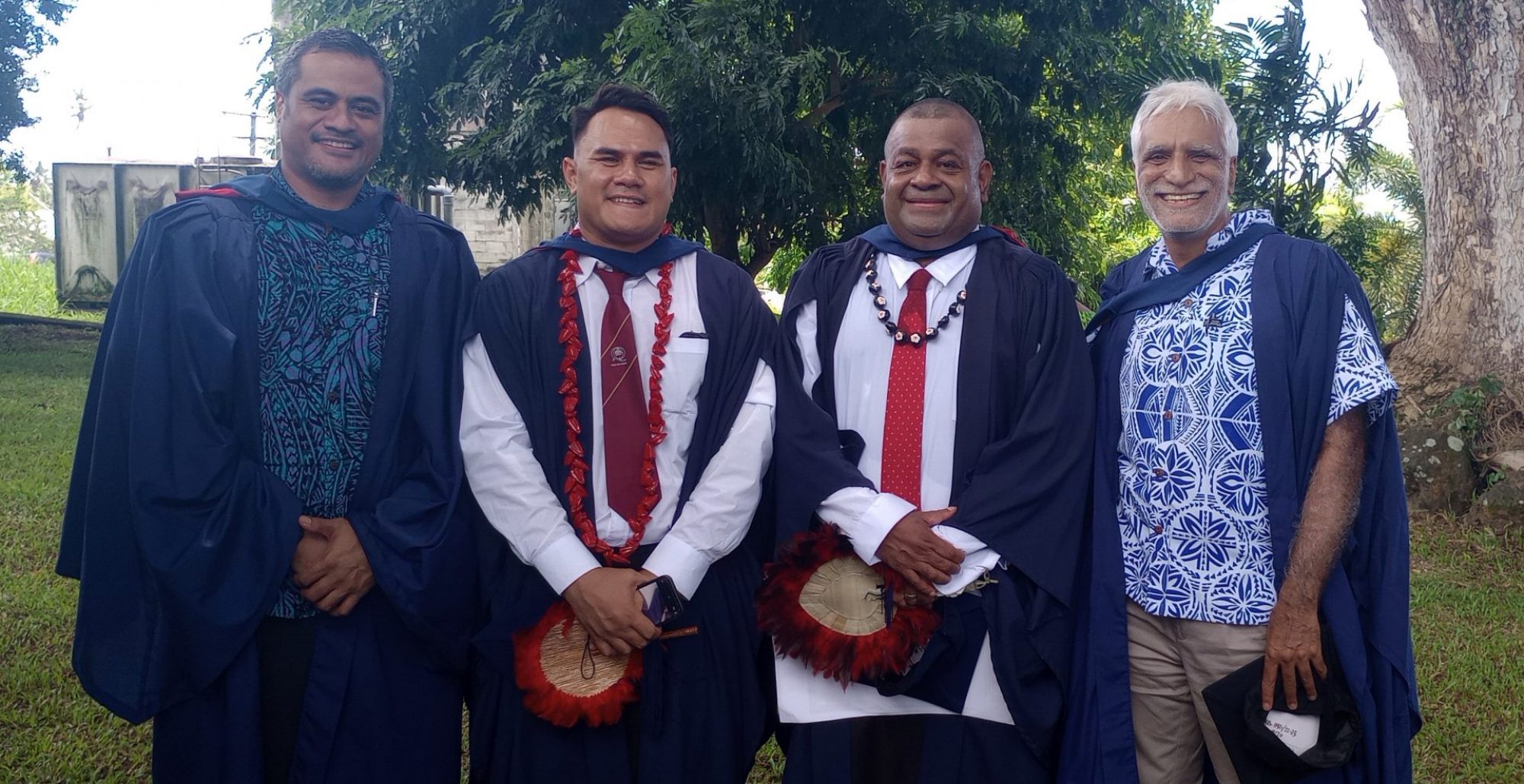The PIOA Upper Limb and Reserach methods modules were held in Apia, Samoa from 16-27 Spetember 2024.
Module 2 was held at the Tupua Tamasese Meaole (TTM) Hospital in Apia, Samoa from 16th to 27 September 2024. There were 12 trainees who attended the module. They are Dr. Robert Fa’ataga and Dr. Michael Leota from Apia in Samoa, Dr. Agnes Auto, Dr. Oralae Pitakia and Dr. Jeffrey Yiapi from Solomon Islands, Dr. Paul Lomavatu and Dr Manoa Valeniyasana from Fiji, Dr. Tzun Rafael from Palau, Dr. Julio Martins from Timor Leste and Dr. Thomas Kiele, Dr Haynes Rasin and Dr Tommy Walters from PNG.

| Week 2 Back row from L to R, Faculty in bold, Paul Lomavatu (Fiji), Manoa Valeniyasana (Fiji), Tzun Rafael (Palau), Michael Leota (Samoa), Julio Martins (Timor Leste), Tommy Walters (PNG), , Robert Fa’ataga (Samoa), Thomas Kiele (PNG), Des Soares (Australia) and Shaun Mauiliu (Samoa), Front row from L to R Jeffrey Yiapi (Solomon Islands),.Agnes Auto (Solomon Islands), Graham Gumley (Australia), Jenny Green (Australia) Oralae Pitakia (Solomon Islands), Haynes Rasin (PNG) |
The lectures were delivered by Dr. Shaun Mauiliu and Dr Areta Samuelu from Samoa, Dr. Roy Craig and Dr David Lees from New Zealand, Dr Graham Gumley, Dr Jenny Green, Dr Sarah Coll and Dr. Des Soares from Australia. Prof. Nik Friederich from Basle in Switzerland taught Research methods each morning via Zoom.
In this module, the students were taught a systematic approach to diagnosis and management of orthopaedic Upper limb conditions. This included clinical history taking and a thorough clinical examination, investigation and a structured, systematic approach to orthopaedic decision making. There was also an emphasis on a systematic approach to the management of upper limb conditions including the management of closed and open fractures and hand trauma. In addition, there were focussed lectures and practicals on the management of trauma affecting the long bones of the limbs, tendon repair and microsurgery techniques for nerve and vessel repair.

Lectures were supplemented with practical demonstrations. Each morning. we commenced with a ward round seeing two patients and getting the students to present the history and clinical signs of the patients. Their management was then discussed and suggestions for improvement were made. This was a useful exercise as we were able to improve clinical skills. It was also helpful to try and elucidate clinical reasoning and decision making and help with developing these skills. The students enjoyed having expert advice on the diagnosis and management of Shoulder and elbow conditions such as rotator cuff disease and frozen shoulder.

The students were assessed with practical tasks (history taking, focussed clinical examinations and a practical task (tendon repair on pork trotter, microsurgical nerve repair on Chicken Maryland (sciatic nerve) model as well as a written examination on the final day of the modules.

The Research methods module was taught by Prof Nik Friederich by Zoom from Basle in Switzerland. Each day we began with a lecture and practical exercise aimed at understanding basic Research methodology including basic statistics and working throgh critical analysis of the surgical literature.


The exit exam was also held in the second week. There were 3 successful candidates Amthony Nasai (PNG), Juvencio Dias (Timor Leset) and Reshwin Rajan (Fiji / Solomon Islands).
Our thanks to the staff and patients of the TMM Hospital, Apia, and Lynn’s Getaway accommodation. Our special thanks to Bek’s restaurant who provided nutritious food for the duration of the course and made us feel at home.
Finally, this module would not have been possible without the generous financial support from the Pacific Community (SPC), Wyss Medical Foundation, AO Alliance Foundation, Australian High Commission, Palau and South Pacific Projects.

| Final celebration dinner at SIVA AFI traditional Samoan cultural dinner including fire dancing. |

| Tommy Walters and Mano Valeniyasa na demonstrating closed management of proximal humerus fractures. |

| Jeffrey Yiapi learning to use his microsurgical instruments. |

| Student performed microsurgical nerve and artery repair on Chicken Maryland model. |

